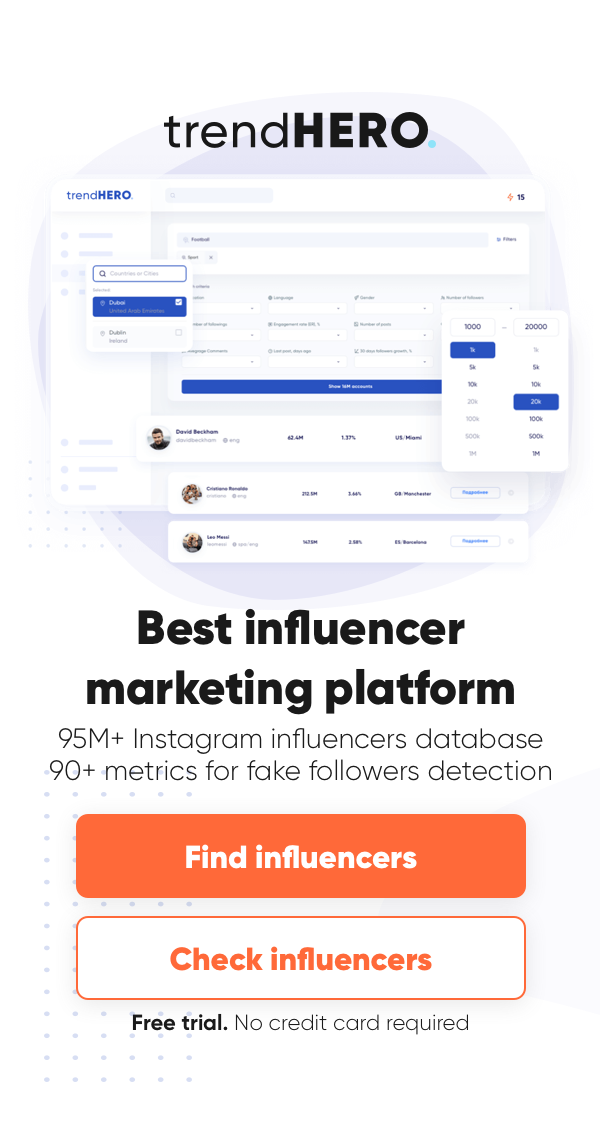Influencer marketing has transformed the use of social media tremendously in the past decade. Social media platforms have gone from spaces to share personal life snippets and information to tools for brand and business management.
The increased popularity of influencer marketing speaks directly to this. There is so much more collaboration and brand ambassadorship happening in online spaces.
It has become such a viable and necessary marketing approach that it is set to grow to 2.85 billion US dollars by 2025. In 2022 alone, influencer marketing campaigns are predicted to generate 15.2 billion US dollars.
Anyone running a brand or business today needs to seriously consider this form of co-creation. So, if you’re looking to learn more about influencer marketing, see our complete guide below.
What Is Influencer Marketing?
Influencers are social media figures that have an impact on other users on various digital platforms. They, essentially, hold influence over others and are often seen as experts in their particular niche or field.
Influencer marketing is a form of brand marketing that leverages this influencer power.
Consider how celebrities have been used for decades to publicly promote brands, products, services, ideas, and more. Their star power and celebrity branding gave them status, giving their endorsements some weight in the face of audiences.
Influencer marketing works much in the same way. Except, it doesn’t necessarily rely on celebrity or mass fame to have a similar effect as celebrity endorsements.
Social media influencers with smaller accounts can still, and may often, be the best route for your brand and its marketing. This is because these influencers can offer access to niche and more engaged audiences on their respective social media platforms.
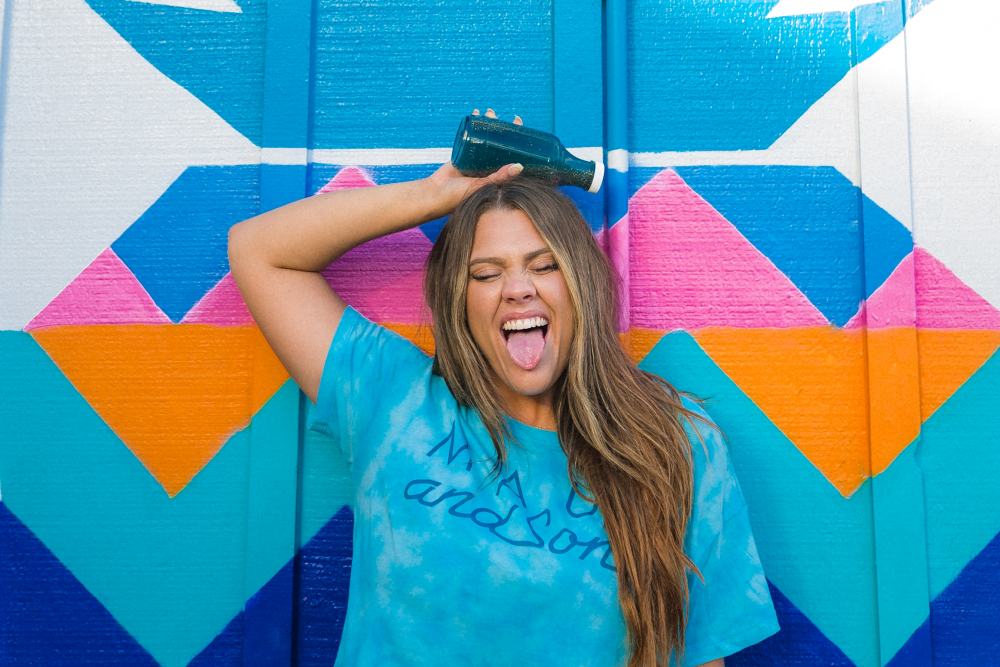
Types Of Influencers
The first thing that comes to mind when a lot of people think of the term “influencer” is an Instagram account with an insanely large following. Are they even an influencer if they have less than 500K on their profile?
The answer is, yes, absolutely yes!
There are several types of influencers that fall into categories based on the number of followers they have. Although the number of followers that qualify an account for each category isn’t fixed, you can use the definitions below as a guide.
Nano-influencers (1,000 to 10,000 followers)
This group of influencers has between 1,000 and 10,000 followers and is the most intimate category.
These are generally not people who work as influencers full-time. They just post photos from their day-to-day life and engage with their followers. They’re usually very real and authentic, which is why their followers are generally very engaged.
So, the benefits of working with nano-influencers are that they experience high engagement and are often more affordable for brands to work with.
This is a great place to start if you’re a small business looking to get into influencer marketing in local communities.
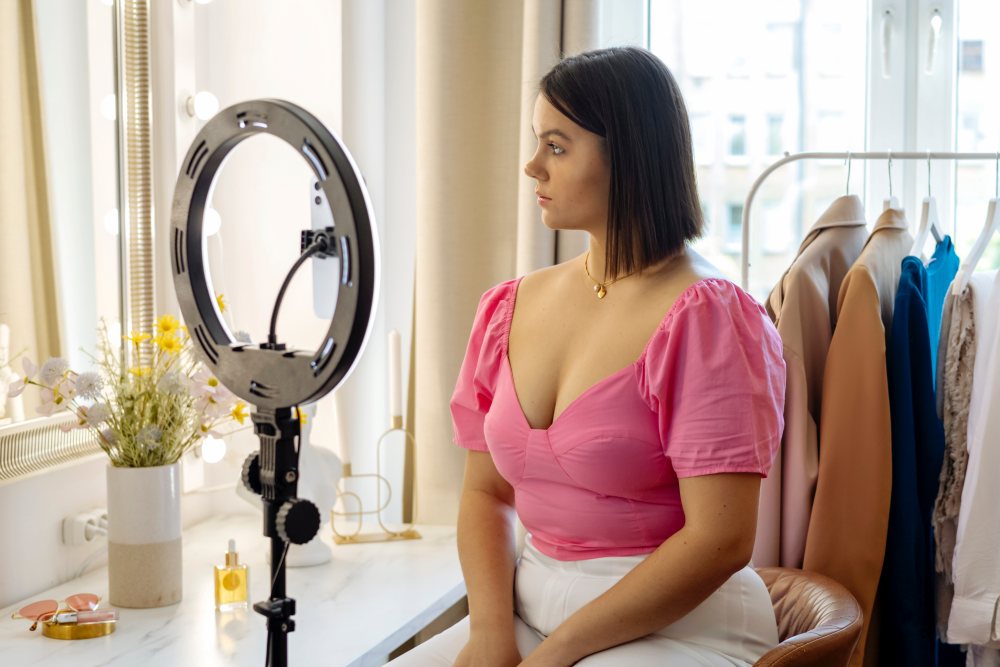
Micro-influencers (10,000 to 100K followers)
Micro-influencers have between 10,000 to 100K followers. This is the most common of influencer types as many social media influencers fall under this group.
They often belong to a particular niche for which they are respected as experts. They are also the group that may experience the highest levels of audience engagement. This is because they have a loyal following that views them as well-informed on their niche. Their audience values their opinions and listens to their recommendations.
Micro-influencers are usually very relatable and build authentic relationships with their followers. They rely on this to garner support and engagement in their promotions.
This means that they may be pickier with the collaborations they choose to do. However, working with them can be effective in driving awareness and conversions for your brand.
More and more brands are seeing the value in micro-influencer marketing. Its market share in sponsored collabs grew from 89% to 91% between 2020 and 2021.
Mid-tier influencers (100K to 500K followers)
Influencers with 100K to 500K followers lie in the middle of the influencer audience size structure. They are the third biggest influencer group.
Although they have an extremely large following, they are more accessible than mega or celebrity influencers. There are often no reps, managers, PR teams, or managers to maneuver around.
You also get a bang for your buck if you’re looking to reach more. You get access to hundreds and thousands of their followers at a more affordable rate than if you went with a mega or celebrity influencer.
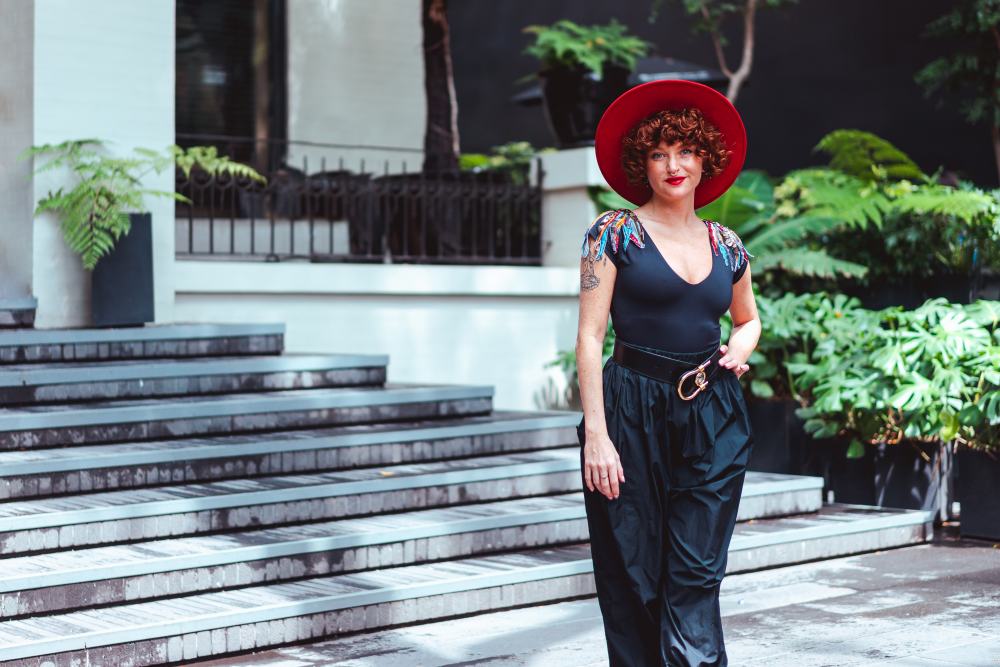
Macro- or Mega-influencers (500K to 1 million followers)
These influencers are the next step up from mid-tier influencers with 500,000 to one million users following their profiles.
As with micro-influencers, they tend to be viewed as top experts or respectable contributors to a particular niche or topic. They often have followers in the hundreds of thousands on their respective social media platforms.
In this category, the influencer has built strong connections and proven the value they bring to their field. They are not seeking to make a name for themselves. Rather, they now contribute as thought leaders and use their expertise to make their income.
Celebrity influencers (>1 million followers)
Celebrity influencers are famous individuals who use their popularity for promotion on social media platforms. Like mega influencers, a celebrity influencer has a large audience that surpasses one million.
This may be the trickiest type to work with as a brand. This is because they may charge high amounts for their promotion.
Users may also be wary of the authenticity of any partnerships that celebrities make. Do they genuinely use and support what they promote? Or is it just to boost their celebrity status and get a paycheck?
This is because these individuals tend to exist almost as idols and models rather than as people that audiences can relate to or have grown to love through nurtured online relationships.
Opting to partner with an influencer in this category can work if the chosen influencer’s lifestyle aligns with the brand.

How Does Influencer Marketing Work?
The basic tenet of influencer marketing is ambassadorship and endorsement.
Influencers act as “representatives” of a brand by featuring products, services, etc in their digital content. This collaboration can be explored using various social media tools and approaches.
Brands can design influencer campaigns and collaborations in the following ways:
Sponsored Content
Sponsored content is the basis of all influencer marketing. It is the simplest and most common influencer marketing campaign, especially for social media marketing.
With sponsored posts, brands “commission” the influencer to create or share promotional posts. The brand can provide ready-made branded content or they can leave it up to the influencer to create the content.
Sometimes, it is a combination of both. The brand may leave visual and other content considerations up to the influencer but supply specific hashtags or captions.
Sponsored content requires clarity for it to work. The brand must make it clear what they expect from the branded content through guidelines. This includes sharing branding and style information, themes, posting requirements, and more.
By doing this, the influencer has a clear understanding of what is expected of them and you can ensure that your brand stays well-positioned.
The sponsorship or payment aspect of this influencer campaign form can vary. Influencers may accept money, free products, mutual promotions, discounts, and more.
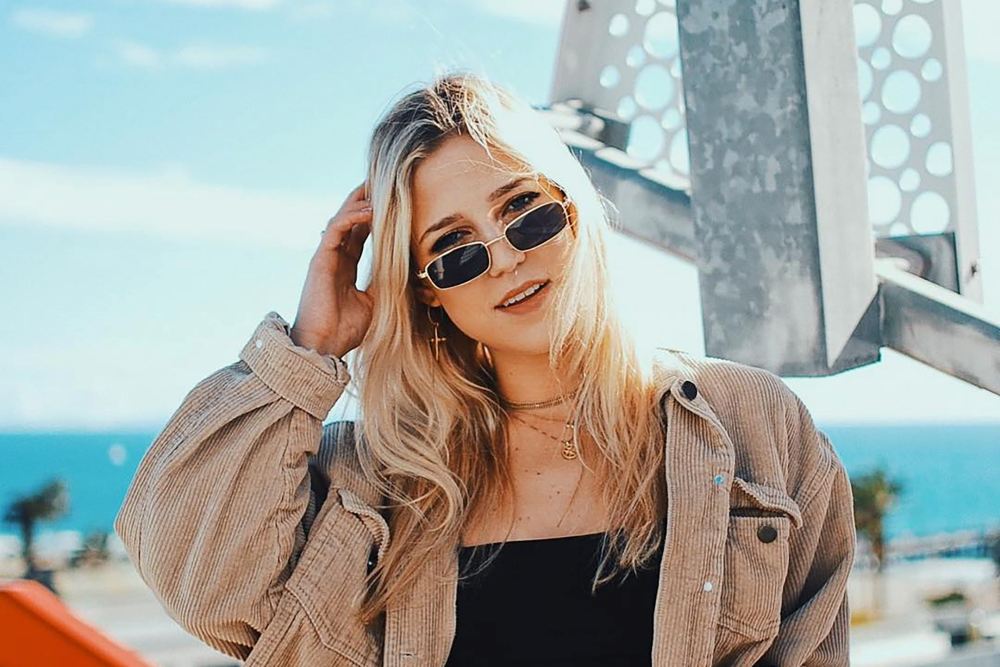
Giveaways & Contests
Everybody loves a free gift, bonus, or friendly competition. This makes social media giveaways, raffles, and contests a smart way to collaborate with influencers.
They offer benefits to everyone involved. Your brand gets the promotion it seeks. The influencer gets to nurture their user relationships. Lastly, the audience stands to win something they wish to have.
This form of influencer marketing works by giving influencers a service, product(s), or coupon, that they can offer to followers for free.
Often, social media giveaways ask users to follow specific accounts, reshare posts on their Stories, comment on the post, tag other people, or do some other engagement action. This gives this marketing method the benefit of potentially increasing your growth and engagement.
Depending on your influencer partner’s audience size, you can increase your reach, impressions, and ROI, too.
Users see your contest as an opportunity to test your products or receive them for free. This may create desire (or just good old FOMO) in those who don’t win. As a result, it can lead them to buy the products anyway, meaning you make more sales.
The downside of running a contest is that its effects may be temporary. Users may only follow your account for the competition’s sake, leading to a decline in numbers when it ends.
However, it’s still a great way to boost brand awareness and potentially gain some new leads and customers.
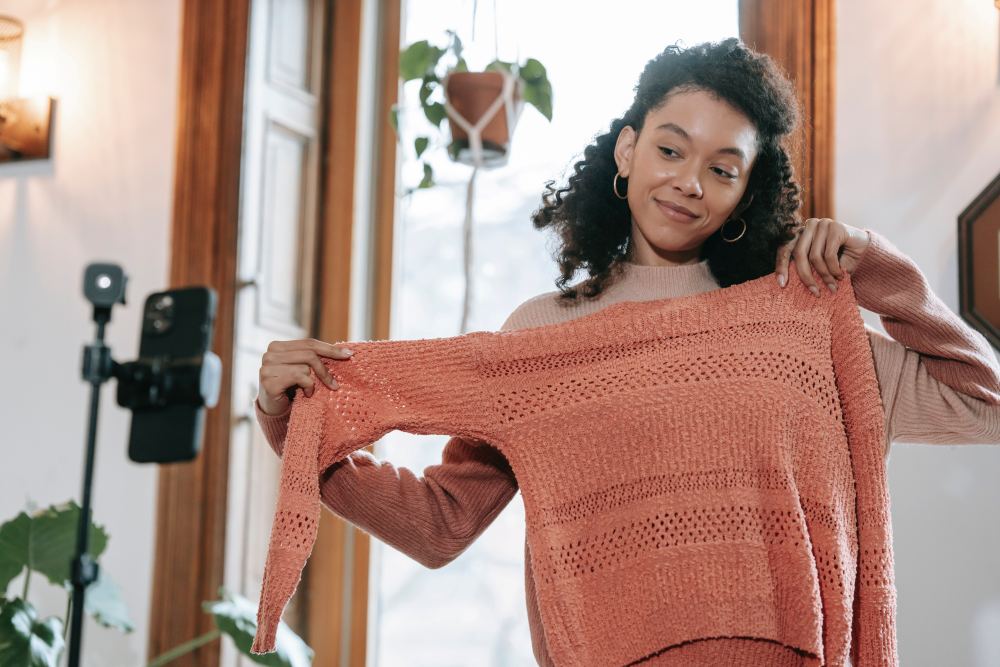
Affiliate Marketing
Here’s a term that comes up a lot in the marketing field but often gets confusing. For a long time, people thought that influencer and affiliate marketing were synonymous. However, they are more like companions.
Affiliate marketing is one way to approach influencer campaigns. And influencers are an example of people that can run affiliate marketing campaigns.
So, how does it work?
Well, it involves content marketing primarily. The influencer shares brand content on their platforms with a personalized link or discount code.
For every sale made by the brand where a customer used this promo code, the influencer receives a commission.
This is a great way to collaborate with many influencers on a budget. You don’t necessarily have to pay each influencer for individual posts.
Rather, their payment depends on the evident returns they bring which also shows you the value of your campaign, too.
To learn more about this type of influencer marketing, see our guide on influencer discount codes.
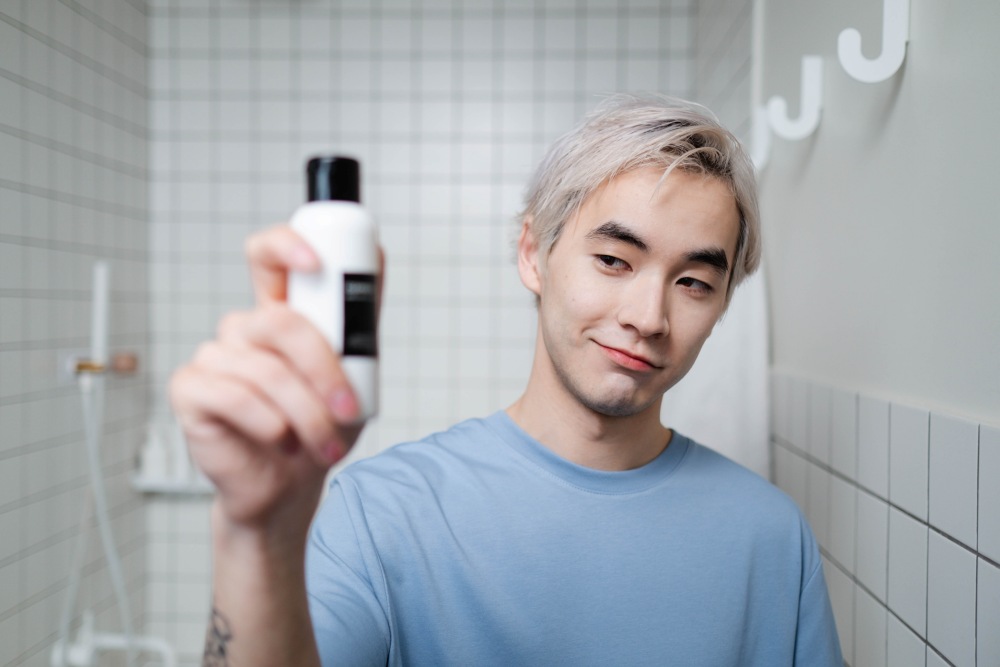
Social Media Takeovers & Guest Content
Content that positions the influencer as a guest on a brand’s digital platforms is highly effective in emphasizing the partnership.
They show a level of trust that exists between the brand and the influencer. The former trusts the latter to manage or contribute content to their pages.
Social media takeovers involve influencers running the brand’s social media account/s for a certain period of time. This can be anywhere from a couple of hours or a day to a week.
Usually, if the brand has chosen to work with the influencer for a specific event or special brand occasion, they may have the influencer take over for a longer period.
These takeovers call for a lot of trust. Brands have to let go of creative control and allow the influencer to do their thing. This includes sharing account security data. It also means believing that the person will share stuff that works for your brand since some of the content cannot be pre-scheduled like social media Lives and some Stories.
Of course, there are other forms of guest content that carry a bit less risk. Influencers can create content that you pre-approve and share on your page – like a Reel or feed post. They can share this post with their followers, thereby driving their audience to your page.
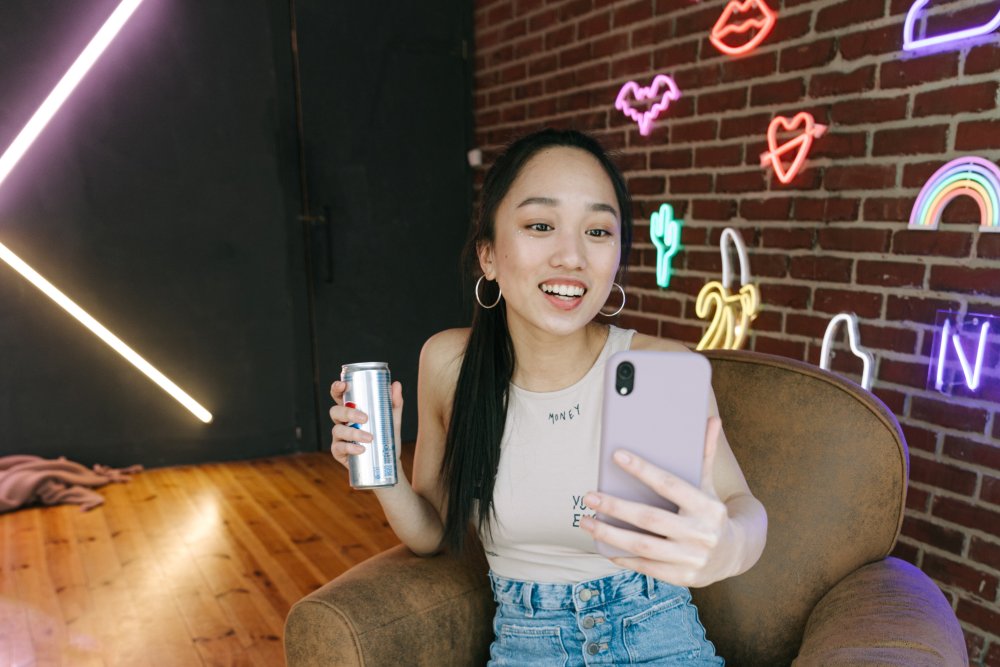
Product Reviews
There may be no tool more powerful in product sales and marketing than word of mouth. And that is super important for influencer marketing.
Influencers basically speak on or give visibility to products and services even if how they do it changes.
Reviews and testimonials are an authentic way to approach integrating word-of-mouth marketing with influencer campaigns. They tell the audience that the influencer isn’t just putting stuff up on their account. They have used the product and know what they’re talking about.
Reviews can work in many ways. For example, the influencer can share a clip of them receiving and unboxing the product. This invites the audience to have an experience of exploring the product with the influencer.
Remember, customer product experiences don’t begin only when the customer uses the product. Reviews are actually a journey from when the customer first sees the product to when they receive it, their feeling about the packaging, and more.
Unboxings take customers on this journey. The influencer can comment on sensory things like smell, the package feel and texture, aesthetics, and more.
Another approach to online reviews is for the influencer to create how-to videos and content featuring your products. This gives customers a look into how your products work and if they do what they are meant to.
Finally, influencer reviews can be just that. They can tell their audience their opinions and experience.
Your brand can encourage reviews by gifting products to influencers or sharing discounts with them. This gives them the incentive to share positive honest reviews of your product.
It works best with nano- and micro-influencers as they may get more excited to share about free goodies than larger accounts that are now used to the industry perks.
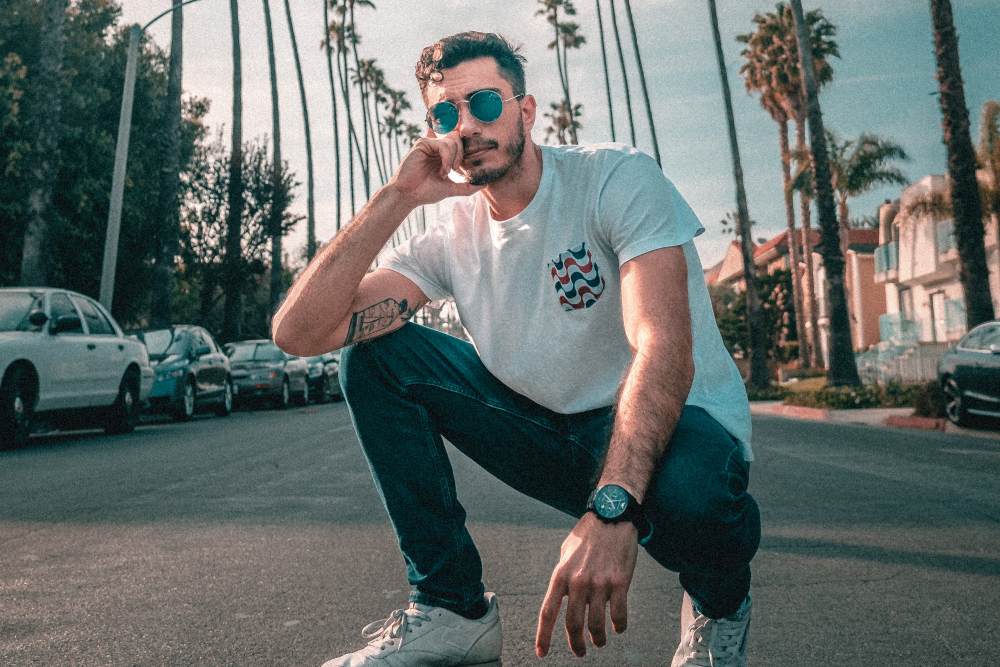
Brand Ambassadorship
Brand ambassadors create and share content for a particular brand for extended periods of time. They can act as representatives or images of the brand for months to years at a time.
Essentially, they become the face of the brand, promoting the brand values and products across their social media.
Ambassadorship requires a solid and consistent level of alignment between the influencer and the business. It’s almost like the influencer becomes a spokesperson for the brand and its products.
The long-term nature of the ambassador programs also builds a sustained connection between your company and the individual.
Succeeding in upholding this relationship points to trust and authenticity that the audience can follow over time.
If customers see a respected public figure or influencer endorsing a brand for a long time, they also believe the brand is worth supporting and sticking with.
The Value Of Influencer Marketing
Influencer marketing campaigns have become an essential part of social media marketing and other brand promotional efforts.
Although they became popular on Instagram first, influencer collaborations have become a prominent part of most digital and social media networks.
Yes, IG remains the top playing ground for influencers. However, TikTok also has a huge hold in the market as it experiences higher engagement than IG.
Influencer marketing campaigns have become integral to social media marketing planning for all platforms.

Stats that indicate the value of influencer marketing include:
- 93% of marketers include influencer campaigns in their marketing strategy.
- Every dollar spent in an influencer marketing campaign brings in an average return of $18.
- 80% of customers have made a purchase due to an influencer’s recommendation.
- 90% of marketers view influencer marketing as an effective marketing tactic.
- 87% of customers will follow a brand, buy something, or visit the brand’s store after seeing products on an Instagram post.
- Over 60% of buyers trust recommendations from influencers vs less than 38% who trust content created by the brand.
But, beyond the numbers, running an influencer marketing campaign has numerous benefits.
Influencer marketing is a great way of increasing brand awareness, reach, engagement, and other essential social media metrics.
You also build trust in your brand by leveraging the trust that the influencer’s followers already have in them.
Furthermore, you build your reputation as a collaborator in your field, enhancing your community and cementing yourself as an industry leader.
With an inundated and constantly changing digital landscape, it is challenging to establish a big enough and engaged following on your own. Influencers help you get your brand name on everybody’s lips. By collaborating with them, you can reach more people than you could with just your pages.

How To Develop An Influencer Marketing Strategy
Now, we’ll take a look at how you can develop an effective influencer marketing strategy. We outline how to find influencers, learn about your target audience, and more.
1. Identify Your Goals
Understanding what you want to achieve with your collaborations is the first step to launching successful influencer marketing campaigns.
Whether you have a unique goal per campaign or a general one, you have to know what you’re trying to get out of it. That is the only way to see if your influencer marketing efforts are successful or not.
Usually, brands use influencer marketing to try and increase their reach and brand awareness. Because influencers have their own established audiences, working with them gives you access to people you may not have reached otherwise.
Other goals tend to be subcategories of this one, including making more sales and increasing product awareness.
You should define your influencer marketing goals parallel to your social media marketing targets and even greater overall marketing aims.
2. Know Your Target Audience
No influencer marketing approach can succeed if you don’t know who you’re trying to talk to.
Unlike traditional marketing forms, social media is premised on engagement. It requires users to interact with content and get involved.
You won’t get the engagement you want if you don’t get your content to the right people.
So, you have to identify your influencer marketing target audience. Again, this can vary for each influencer marketing campaign.
You can design customer or user profiles that define who you are trying to focus on. This can include demographics like age, location, gender, education, purchasing habits, preferences, and more.
These profiles will help you narrow down which influencers you can work with as you can look into those that have built a following in those communities.
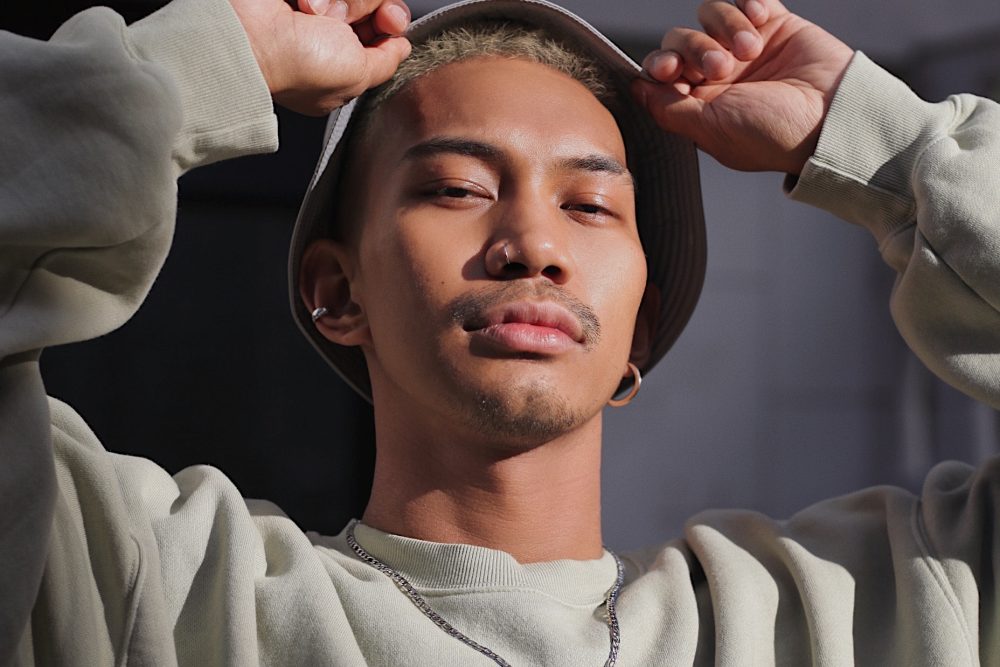
3. Get Inspired & Research
Influencer marketing is all about relevance and resonance. Your partnership must reflect the trends and interests of the audience you want to reach.
Before setting clear boundaries around your campaign, like budget, the number of influencers, etc, you have to find out what is working out there.
Check out different influencers in your industry, what they post, which posts receive good engagement, and more.
You can also look at your competitors and see if they are running any campaigns with influencers. Consider what methods they use and which of their content gets good responses. Essentially, you want to know what works.
4. Decide On A Budget & Management
Your research should also guide you on the standard practices in the influencer marketing space.
How much do influencers charge generally? What are the management procedures? How do businesses run their campaigns?
Design a well-structured influencer program that outlines how your business will handle collaborations and more.
Defining your budget and expected costs is also important so that you can approach influencers within your capability.
5. Establish Legal & Compliance Structures
Of course, like everything else in business, there are regulations to consider with influencer marketing.
Different countries have different rules governing marketing and advertising disclosure. For example, the UK’s Competition and Markets Authority (CMA) prompted Facebook and Instagram to decrease hidden advertising. This requires influencers to state when they share a sponsored post.
Although these rules vary from country to country, platforms have also started introducing tools to encourage disclosure.
Instagram, for example, requires all branded content to use a branded or sponsored content tag.
Your brand should stipulate legal requirements like these in your influencer agreement. This ensures that you don’t face compliance issues later on for uncomplicated influencer marketing success.

6. Identify Influencers & Choose Carefully
Defining your goals, understanding your audience, and doing a bit of research will help you pick the best influencer for your brand.
You need someone you can trust, whose personal brand aligns with your values, and whose views you respect. This should be the foundation of all relationships with brand partners.
It is particularly important when working with influencers. The right influencer will already have a brand that speaks to yours. The right influencers aren’t necessarily the most popular ones but the ones that align with your brand.
Building from brand values and qualities, the numbers will also guide you on the right influencer. Do they get lots of comments, reshares, likes, etc? Is the quality of their engagement positive or negative?
Engagement rate and quality tell you how much their audience trusts them and the level of dedication that their followers have.
Avoid using follower count to pick the influencer you work with. Many accounts have fake followers (see: how to run a fake followers audit), buy followers, or use bot accounts. This doesn’t work for influencer marketing as it requires genuine connection and engagement.
Your influencer needs to have real access to the target audience you want so that you can reach your goals.
Finding influencers to work with:
There are many different ways to find influencers in your niche. For example, you can use Instagram and search for hashtags that are relevant to your brand or products. Alternatively, conduct a Google search for influencers in your industry/niche.
You can also use an influencer search tool, like trendHERO, to find influencers according to industry, budget, and other factors.
Using an influencer marketing agency has also become an extremely popular choice to protect both brand and influencer interests. They give influencers representation and brands and a means to hold their content creator partners accountable.
Learn more here: How To Find Influencers On Instagram

Questions to ask when making your selection:
- Does the influencer get a lot of engagement?
- Does their brand align with yours and do they seem to have the same values?
- What are they posting? You need to evaluate if they are already posting content and products that are similar to yours.
- Have they done any influencer work before? If yes, have they worked with brands like yours? Experience matters! Knowing that they have it assures you that they can deliver.
7. Master Outreach
Influencer outreach is a tricky one to get right. After all, influencers are individuals with their own personal brands, personalities, and preferences. How one influencer works may differ completely from another.
There are some standard steps you can take when reaching out to potential partners.
First, you should engage with their content. Make it clear that you are interested in their brand without being too aggressive. You can do this by liking their posts, leaving a comment here and there, or resharing some of their content.
This is a good way to establish a connection while you decide if they are right for your brand. Their response may also help you gauge their thoughts on your business.
To initiate a partnership, you can either send them a DM or an email. Most influencers have their professional email address available on their profiles.
Write a personalized message that shows them that you have been interacting with their work and highlights why you think the collaboration could be beneficial to you both.
This is made easier by using an influencer marketing platform like trendHERO. It allows you to connect with and manage influencer communication in one, centralized dashboard.
Share relevant information about your brand and campaign and invite them to get in touch if they are interested.
You want your influencer outreach to strike the line between friendly and professional. Show them that you’re serious but that you are an open and amicable collaborator.

8. Actively Work With The Influencer
Your work doesn’t end with influencer outreach. Yes, they may be in charge of creating content but you still have to remain involved and active.
Every relationship is two-sided and requires constructive feedback to stay successful.
You need to really collaborate with your influencer partner. Give them the resources they need to make both your brands shine through in the content. This includes sharing your branding style guide which ought to outline areas like font, language, tone, brand personality, and more.
Providing them with any information and resources they may need within reason ensures you get the best out of your influencer campaign.
You also need to stay connected to the influencer.
Don’t just dump the brief on them and vanish until the end of the campaign. Communicate. Ask them if they need anything. Monitor posts for quality and engagement. Offer suggestions and feedback, too.
You may not be in complete control of the influencer campaign, but you can be an active contributor.
Keeping in touch will also make the influencer feel supported in the process.

9. Track The Results Of Your Influencer Marketing Campaigns
As with any marketing campaign, it is important to reflect on and measure the progress of your influencer campaigns.
You need to see what works or doesn’t and how your audience receives your marketing efforts. This lets you understand what you can do better.
There are many ways to track campaign performance and you can use one or all of them.
Commonly, brands like to make the mistake of looking at surface-level vanity metrics such as likes and comments.
Important as these engagement signals are, you need to find a way to measure the ROI of your influencer campaign.
One way to do this is to use unique links or codes to see sales resulting from the campaign. You can also monitor the source of the traffic to your website and other networks. This enables you to see if people are coming from the influencer account.
Another option is to compare insights and analytics over the span of an individual campaign. You can do this on your accounts as well as request in-depth reports from the influencer for each post.
10. Review & Improve
It’s important to continuously adapt in the social media world. You have to learn from flaws in past campaigns to develop better ones in the future.
Review campaigns critically, asking how you can increase engagement and other metrics.
The best way to do this is to set deadlines for reviewing throughout your campaign’s timeline. That way, you can keep track of campaign progress intentionally.
Also select dates at the end of the campaign and post-completion. These will be useful for observing the campaign’s performance overall. How much engagement have you received? Which posts performed best overall?
Reviewing your campaign results allows you to make adjustments and ultimately improve your overall influencer marketing strategy and future campaigns.

Final Thoughts
Influencer marketing has taken the digital world by storm… And it doesn’t seem to be slowing down anytime soon!
It has become a popular marketing technique for brands and businesses as it has several benefits including increased brand awareness, engagement, reach, and more.
Working with influencers is now an important part of rallying people around your brand and building trust and a good reputation.
Influencer endorsements have proven to be powerful tools in increasing sales, product interest, brand site traffic, and more. The return on investment with influencer campaigns is well worth the hype.
As the market expands in years to come, there are certain to be more influencer types and methods to fit your company.
Now is the time to jump aboard the influencer marketing train so you don’t get left behind or hop on too late. It is clearly a lucrative and effective marketing approach and this guide is all you need to get started.
We also recommend to read
 How to Contact Instagram Influencers in a Right Way?
How to Contact Instagram Influencers in a Right Way?  How to Become an Instagram Influencer in 2021 and Get Paid For it
How to Become an Instagram Influencer in 2021 and Get Paid For it  How to Find Top Instagram Influencers in Your Niche?
How to Find Top Instagram Influencers in Your Niche?  How to Create an Influencer Media Kit in 10 Steps (+Templates)
How to Create an Influencer Media Kit in 10 Steps (+Templates)  How to Find Micro-Influencers in 10 Steps
How to Find Micro-Influencers in 10 Steps  How to Find Local Influencers for Your Brand – 7 Ways
How to Find Local Influencers for Your Brand – 7 WaysInstagram Engagement Rate Calculator For Free
Check any influencer's Engagement rate and analyze his or her followers growth history
Other free tools: Follower Count History, Instagram Follower Count, CPM Calculator
